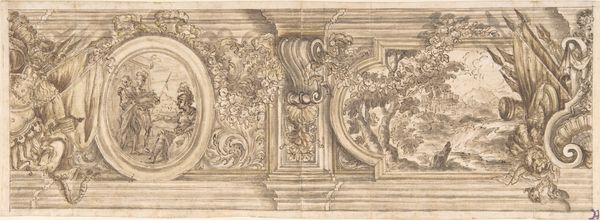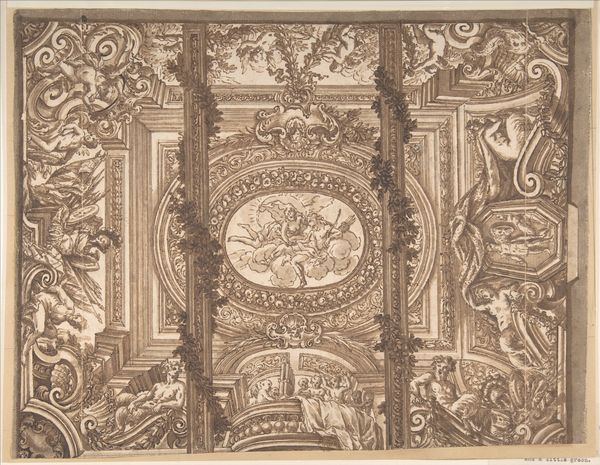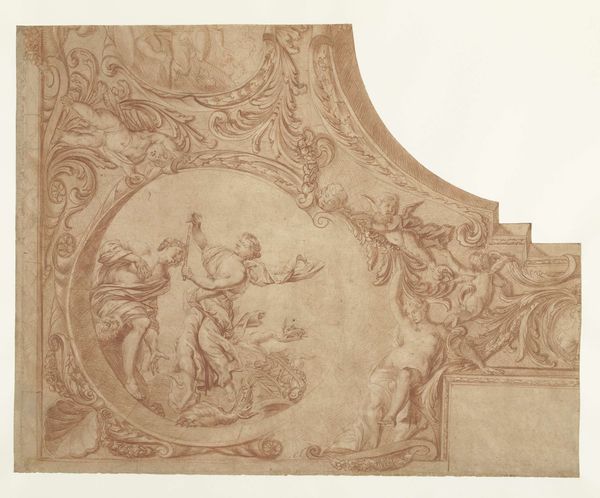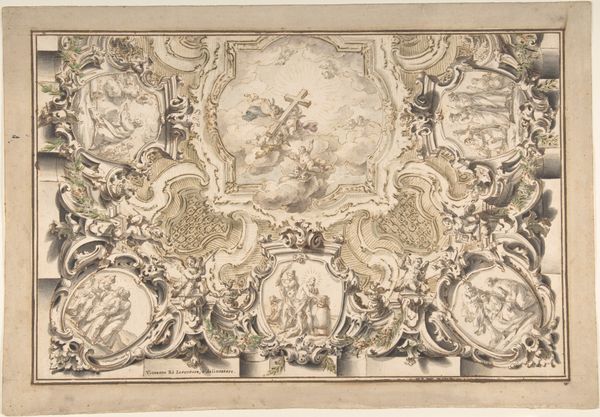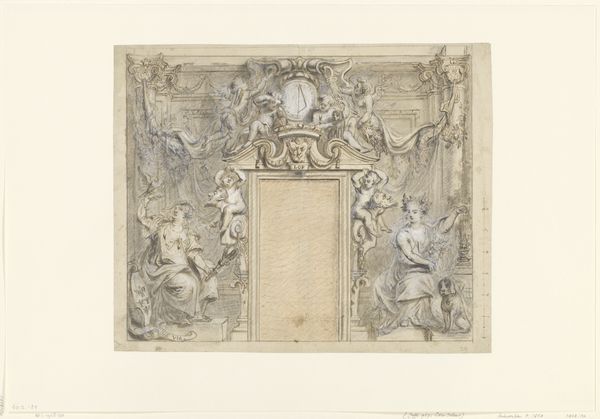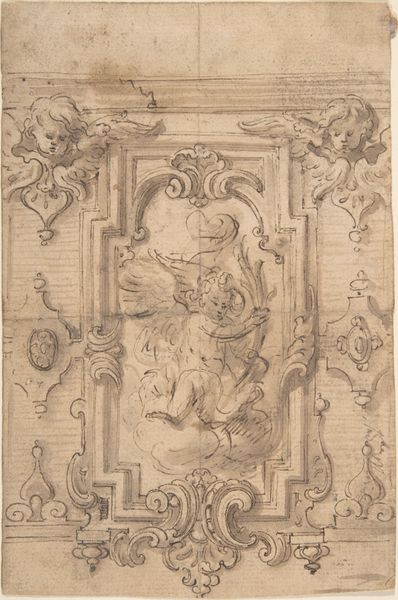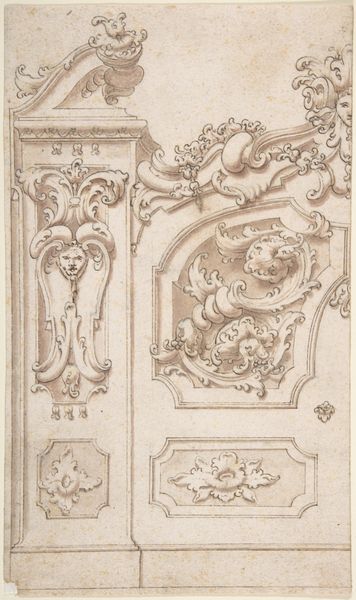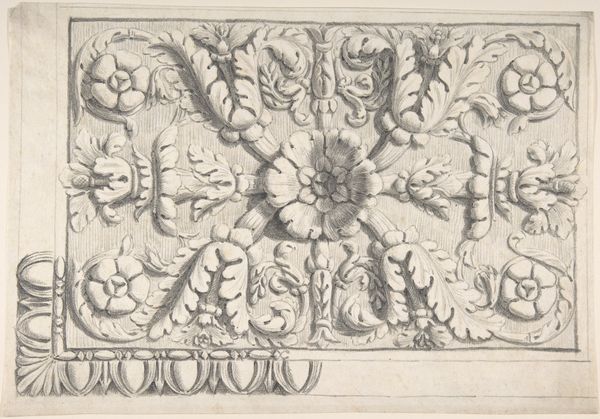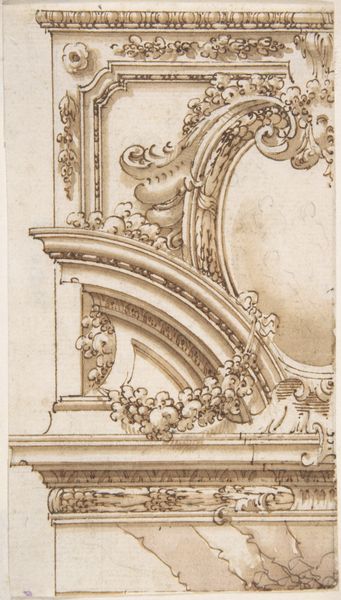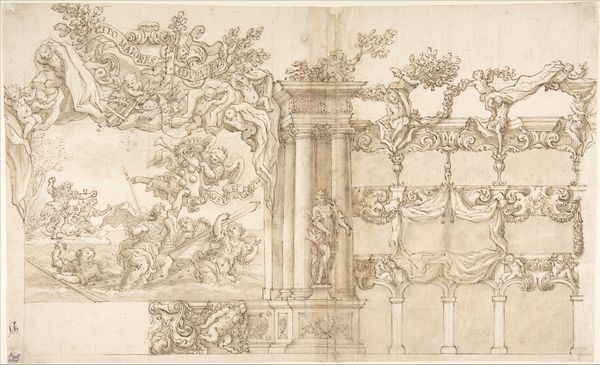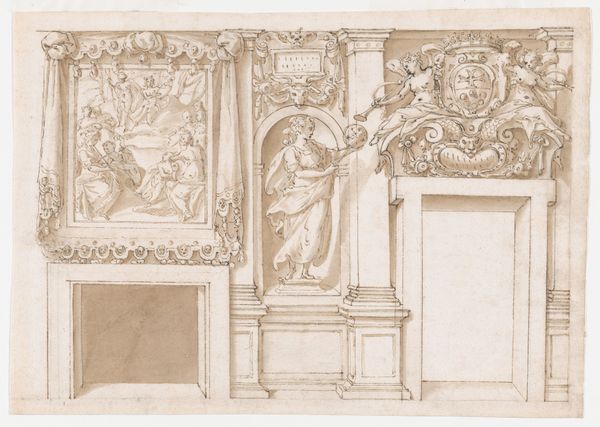
Drawing Showing Two Alternate Designs for a Cove Decoration 1600 - 1700
0:00
0:00
drawing, print, ink, architecture
#
drawing
# print
#
landscape
#
figuration
#
11_renaissance
#
ink
#
history-painting
#
architecture
Dimensions: 8 x 13-3/8 in. (20.3 x 34 cm)
Copyright: Public Domain
Curator: Look at this drawing—an anonymous rendering, made sometime between 1600 and 1700, showing two alternate designs for a cove decoration, now residing at the Metropolitan Museum. It's all done in ink. What springs to mind when you see it? Editor: Well, immediately, I get a sense of theatrical grandeur, even though it's just a drawing. The figures are so active, posed like they’re on a stage. And is it just me, or is there something a bit unsettling about all those cherubs? Curator: That theatrical quality you're picking up on is no accident! Remember, this was the era of elaborate Baroque ceilings. These aren’t just decorations; they are statements of power. These designs would likely have been commissioned for an aristocratic household or even a church. The cove—that curved architectural element where the wall meets the ceiling—was prime real estate for showing off. Editor: It's funny, isn’t it? That this very preparatory sketch also possesses such presence and power! I feel like this reveals so much of the artist’s intentions and… daring. To take something as commonplace as architecture and inflate it into pure theatre! Are we looking at landscapes or theatrical props? It all merges into an uncanny scene. Curator: And note how the landscape elements are being incorporated within the architectural design; those painted clouds through the archways… it's meant to be illusionistic, giving the impression of looking up into the heavens themselves. You could read that blend as a power move, actually: claiming earthly authority through connection to the divine. Editor: Oh, absolutely, it’s all about impressing visitors, projecting wealth and authority. And with that beautiful sepia ink— the texture created feels tactile, so three-dimensional— almost as though this work jumps out to confront us in our own time! Even today! Do you imagine its influence on the architects of that time? Did many works follow it to project their patron's image to a wider public? Curator: Undoubtably! Designs such as this would have been crucial in setting trends and disseminating visual ideas across Europe. I feel incredibly humbled that we still appreciate a sketch of an artwork that almost certainly influenced public sentiment and Baroque sensibilities so long ago. Editor: Indeed. So interesting how what was merely preparation can be so profoundly resonant centuries later. Curator: Well, what a privilege to dwell on such powerful preparation. It's like glimpsing the artist's own mental theatre. Editor: Right, the artist’s private thoughts before they met the world! Wonderful.
Comments
No comments
Be the first to comment and join the conversation on the ultimate creative platform.
